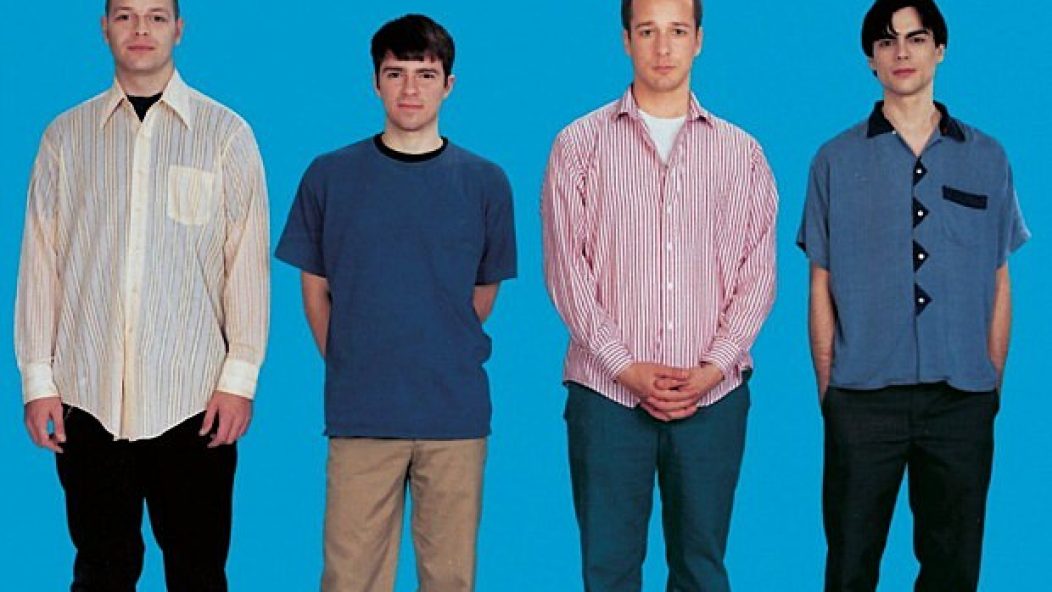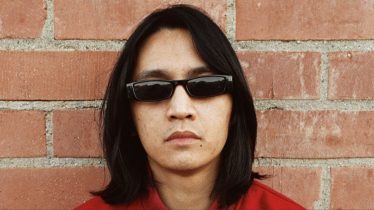
20 Facts You May Not Know About Weezer’s Blue Album
May 10, 2014, marks the 20th anniversary of Weezer’s self-titled debut, affectionately known the world over as the Blue Album, for reasons which are pretty self-explanatory. Since its release two decades ago, Weezer has go on to sell more than three million copies in the U.S. alone, given rock radio three monster hits (“Buddy Holly,” “Undone – The Sweater Song” and “Say It Ain’t So”) and helped influence thousands of musicians to try and figure out how to write the perfect pop song—something Rivers Cuomo & Co. mastered on their first release. Since Weezer superfans are in a class all their own (and you’re looking at one of them right here), here is a cheat sheet of little-known facts about the Blue Album to help you get your cred up if you’re a latecomer to one of the best albums in the history of rock music.
1. The first song written for the Blue Album was “The World Has Turned And Left Me Here.”
2. The last song written for the Blue Album was “In The Garage.”
3. “No One Else” is the only song on the Blue Album in standard tuning.
4. Rivers Cuomo wasn’t Weezer’s only songwriter.
For the bulk of Weezer’s career, Cuomo has been solely responsible for Weezer’s songwriting, but in the band’s early days, it was a bit more collaborative, with drummer Pat Wilson earning co-writing credits on three of Blue’s 10 tracks—“My Name Is Jonas,” “The World Has Turned And Left Me Here” and “Surf Wax America.” Additionally, original Weezer guitarist Jason Cropper also has a co-writing credit on “My Name Is Jonas” as he wrote the fingerpicked intro, but he’s not heard on the recorded version, because…
5. Jason Cropper was kicked out of Weezer during the Blue Album recording sessions.
The story is still shrouded in a bit of mystery, but apparently tensions between Cropper and the other three band members had been running a bit high due to some unspecified erratic behavior, and matters were complicated by the guitarist and his then-girlfriend expecting their first child. While Cropper did lay down rhythm guitar and backing vocal tracks on the album, those were wiped after he was dismissed from the band—with only two days until mixing was scheduled to start. A call was immediately placed to Brian Bell, then-bassist of LA funk-rock band Carnival Art, who was asked if he was interested in joining. A quick demo-tape submission later, and he was in—although with the project running out of time and going over budget, a strange decision was made…
6. Brian Bell doesn’t actually play a note of guitar on the Blue Album.
Despite being credited as guitarist in the Blue Album’s liner notes, Bell’s only real contributions to the album were his re-recorded versions of Jason Cropper’s backing vocals. It was decided there wasn’t enough time for Bell to lay down guitar tracks, so as the legend goes, Cuomo flawlessly laid down all of Cropper’s parts in one all-day marathon session. Bell’s recorded debut with Weezer came on the single to “Undone” the following summer, as he played guitar on fan-favorite B-sides “Susanne” and “Mykel & Carli.”
7. “Mykel & Carli” is about Mykel and Carli (duh).
8. “Jamie” and “Susanne” were about real people, too.
9. “Buddy Holly” wasn’t about Buddy Holly.
10. “Surf Wax America” featured a secret shoutout to Rivers Cuomo’s hair-metal past.
11. “Undone” almost came undone.
The original concept for the opening of each verse of “Undone” was to have a sound collage of dozens of audio samples created by friend of the band and “fifth member” Karl Koch. As Koch explained in a 2003 essay, the collage included “everything from Humphrey Bogart to Christian radio dramas [and] the Peanuts gang.” During the mastering process in November 1993, Geffen balked at the idea of clearing all the samples, so Koch, Matt Sharp and Mykel Allan quickly created the now-infamous “party dialogue,” which was recorded in Cuomo’s garage in Los Angeles, mixed down and sent back to New York City just in time to make the cut for mastering.
12. It took 16 years for the original version of “Mykel & Carli” to come out.
13. When the Blue Album came out, no one cared.
Well, that’s not entirely true—obviously, the band had developed a bit of a fanbase in Los Angeles, but with the band having not toured nationally yet and the internet still very much in its infancy, the majority of the planet had no clue who Weezer were. Case in point: The Blue Album didn’t debut anywhere near the Top 20; in fact, the No. 1 album the week following Blue’s release was Tim McGraw’s Not A Moment Too Soon. The No. 5 album? Chant, by the Benedictine Monks Of Santo Domingo De Silos. No. 14? Yanni’s Live At The Acropolis. 1994 was a weird time, folks. (The album eventually peaked at No. 16 on the Billboard 200, spending 78 weeks on the chart.)
14. Weezer’s first music videos were directed by an Oscar winner.
15. The Blue Album sold more than three million copies but never produced a No. 1 single.
It seems crazy that a band can sell three million copies of a record without having a single break through the mainstream, but Weezer pulled it off with the Blue Album. Not only did none of the album’s three singles come anywhere near the top of the charts (“Buddy Holly” was the only one to even make the Top 40, at No. 18), none of the songs hit No. 1 on Billboard’s Modern Rock Tracks, a chart specifically designed for a band like Weezer to flourish. Again, “Buddy Holly” came closest, peaking at No. 2 on the Modern Rock Tracks chart in December 1994, kept out of No. 1 by R.E.M.’s “Bang And Blame.”
16. The version of “Say It Ain’t So” you know probably isn’t the original version.
17. The music video for “Buddy Holly” was included as a bonus on the Windows 95 installation disc.
18. Matt Sharp once sued Weezer for songwriting royalties for the Blue Album.
19. The performance of “Say It Ain’t So” on Late Show With David Letterman is one of the greatest late-night TV performances by any band ever.
20. That Letterman gig was also the very last performance of the Blue Album tour cycle.
In the weeks immediately following that August 1995 TV performance, Cuomo moved to Cambridge, Massachusetts, where he would start his fall semester at Harvard, as well as begin work on Weezer’s sophomore album, Pinkerton. By the way, mark your calendars: Pinkerton’s 20-year anniversary is Sept. 24, 2016. ALT







